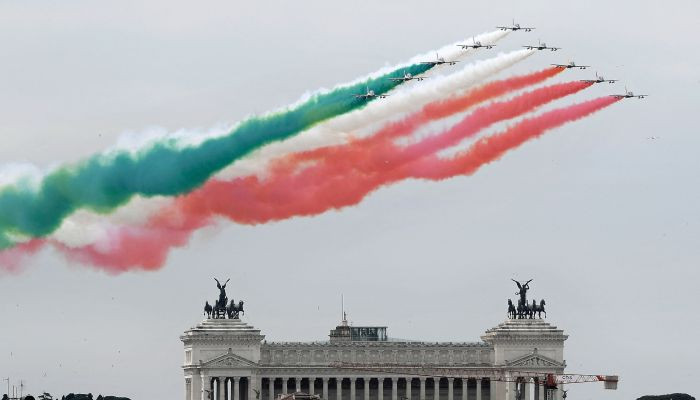+19 °C, +15 °C ... +26 °C Tomorrow:+26 °C

The Defense multiannual programmatic document (DPP) for the three-year period 2022-2024 has been published, the third signed by Lorenzo Guerini. The growth of the budget for the Armed Forces continues, set by the new document at 18 billion euros. An increase compared to 16.8 in 2021, in turn increasing compared to past years. The part of the budget dedicated to procurement amounts to 5.42 billion euros, with an increase of 34% compared to the four billion spent in 2021. In addition to the reference financial framework, the new DPP also provides an update on the activities involving the Defense, following the provisions of the 2022 National Military Policy Directive, recently approved by the Minister, and the 2023 Guideline Act on the general lines of action of the Defense within three years. On these issues, among other things, the minister had recently intervened, explaining the contents of the Missions Decree, approved by the Joint Foreign and Defense Commissions of the Chamber of Deputies, to the commission. The strategic context The DPP starts from the consideration that the war in Ukraine has caused a “systemic shock” whose economic and social repercussions will condition the international context “already burdened by the echo of the pandemic and by multiple unresolved conflict situations”, radically changing the world order and European security “which we have known so far”, explained Guerini in his introduction to the document. “The invasion has brought to the attention the importance of symmetrical conflicts”, writes the minister, adding that the war has “revealed a significant conventional, cyber and space threat and even evoked the nuclear threat”. In this context, the minister records that “there must be no doubts about the need to continue on the growth path of the defense budget”. The programs And so, among the more than 250 pages of the document enter various programs expected by the Armed Forces. 46 programs are expected to start in the three-year period 2022-2024, to be added to the 170 already in operation. Among the programs, the objective of expressing, by 2026, a national intervention force with the ability to operate in all five operational domains “autonomously or integrated into multinational devices” remains confirmed. The various programs will be financed thanks to the “Fund relating to the implementation of multi-year investment programs for the needs of national defense ”, envisaged by the latest budget law. The Tempest fighter Italy has again increased its defense spending, investing in the Tempest program in 2022 and radically updating its spending forecasts for the fighter program. Among the programs that have benefited from a sharp increase in funding is the sixth generation Tempest fighter, which sees Italy collaborating with the United Kingdom, Sweden and Japan. Last year, the budget document foresaw a total expenditure of two billion euros for the program, with an annual expenditure of twenty million euros for 2022 and 2023. The new budget, on the other hand, commits 220 million euros to this. ‘year and foresees 345 million euros for the next, and the ministry has revised the overall expenditure estimate to 3.8 billion euros by 2036. “The refinancing of the FCAS / Tempest program – the document states – which offers a wide range of horizon of industrial cooperation, even outside Europe, aims to capitalize on every possible technological return “. These funds cover the research and development phase of the program, which until last year had an overall requirement calculated at 6 billion euros. Probably, this estimate is now being revalued. The Italian role In the document, the Ministry of Defense underlines how Tempest’s “scope” includes a “main air platform”, additional aircraft for the crew, actuators and sensors and support C2 networks that “maximize integration” with the systems. current and future land and sea. The collaboration on Tempest with the UK, Japan and Sweden means that Italy will have “exclusive access to a project of exceptional ambition”. The future technologies needed for Tempest will also be accelerated by the support of other Italian government bodies, including the Ministry of Economy, Economic Development, University and Digital Innovation. Leonardo, Elettronica, Avio Aero and MBDA Italia are all involved in the developments of the Tempest sector after having signed a declaration of intent upon Italy’s entry into the program. |
MAMUL.am - News from Armenia, Artsakh (Nagorno-Karabakh) and the world
Republication or redistribution of MAMUL.am content is expressly prohibited without the prior written consent.
Address: 1 Charents str., Yerevan, Republic of Armenia.
Tel.: +374 (10) 55-20-59
E-mail: info@mamul.am
Tel.: +374 (91) 99-22-02
E-mail: marketing@mamul.am























